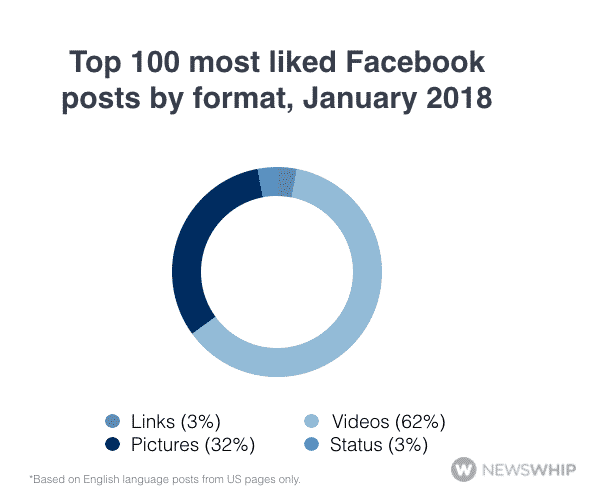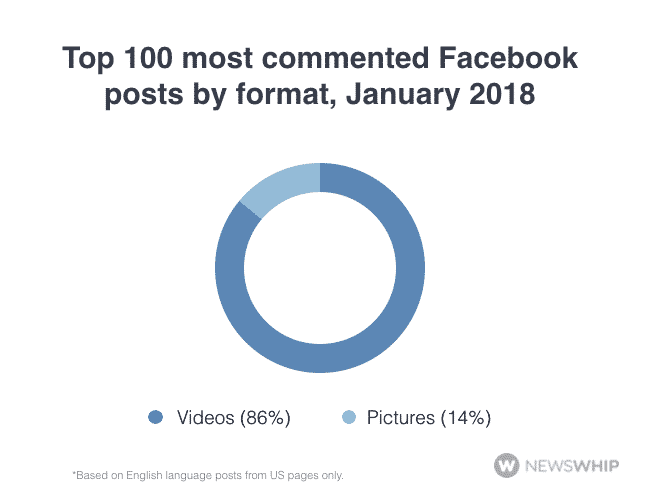Likes And Comments On Facebook
Likes vs comments on Facebook: What's the difference?
Do Facebook posts that receive more comments than likes have much of a discernible difference?
With recent algorithm changes on Facebook, there's been a lot of focus on the comment sections of social media posts.
In public statements, Facebook has placed a lot of emphasis on 'meaningful interactions' as a measure of worthiness for posts that will have increased visibility in future. Comments are considered one way of measuring the degree of 'meaningfulness'. The general theory is that stories and posts shared on social media that attract more comments are more likely to resonate with a wider audience, as the comments indicate a higher degree of engagement on the part of the audience. But is there a much discernible difference in the content that gets more comments than likes?
We've already seen that in many cases on Facebook and Instagram, a comment can sometimes be seen as another way of sharing a post. Users tag their friends, who receive a direct notification linking them to the post. It's quicker than sharing to a page, or sometimes even sharing through direct message.
But that doesn't necessarily mean that a high volume of 'share comments' will lead to those posts being surfaced faster in the News Feed. In January, Adam Moressi, Head of News Feed at Facebook, said that comments tended to be more meaningful than likes, and that "longer comments tend to be more meaningful to the recipient than shorter ones".
https://twitter.com/mosseri/status/951616914450599936
https://twitter.com/mosseri/status/951617876787544065
So, how does content that receives proportionally more comments than likes on Facebook differ? Looking at a month's worth of data for January, the picture is pretty clear on what formats attract the most of both. Here's how the top 100 most 'liked' Facebook posts of the month broke down by post format, based on U.S.-based English language pages in the NewsWhip database:

So, of the most liked post, the vast majority are visual. Videos and images together made up over 90 percent of the top 100, with the bulk of those appearing as videos.Next, let's look at the top 100 most commented posts, based on their total comments, from Facebook comment plug-ins, and comments on Facebook posts.

As you can see, the number of videos shoots way up, and other formats such as links and statuses get pushed completely out of the top 100. Most of these videos are viral or action-themed clips, and some even expressly urge viewers to tag their friends in the comments. As a barometer of quality, comments on these videos aren't generally all that useful.
However, it has to be remembered that on Facebook, posts typically receive a far higher volume of likes than comments. Therefore, ranking by 'most' comments or likes only provides a partial insight into how these metrics apply to different types of content themes.
To get a sense of this, it's possible for social media editors to find which of their posts attracted the highest percentage of comments, relative to the total engagements they received. As well as this, previous data has shown that videos and images attract a higher proportion of engagements, relative to link posts. Many of these clips are viral in nature, and very short. This may already be changing however, given Mark Zuckerberg's recent comments about wanting to reduce passive scrolling in the News Feed.
Let's now take a closer look at link posts specifically, to see the difference. Here were the post captions of the ten most liked and most commented US Facebook posts in the NewsWhip system in January.

Content that receives more comments tend to be stories that revolve around a controversial aspect of the current news cycle ("Frederica Wilson won't attend Trump's State of the Union"), an eye-catching and unusual headline ("Study says to stop wearing jeans at age 53"), and major news in the entertainment world ("Game of Thrones – Season 8 Returns in 2019").
In this sample, conservative pages also dominate, with Fox News and the Conservative Daily making up much of the top ten.

Meanwhile, looking at the most liked posts of the month, there's a wider range of sources. While Fox News remains a firm fixture, the stories also seem to tend to be less specifically political in nature.
However, it's also worth noting that many of these posts have huge like counts at the expense of other engagements, such as shares and comments. It's possible that users are simply acknowledging each post's headline as they scroll past, perhaps without actually clicking through, or engaging in what Facebook would describe as any other 'meaningful' behaviour.
Commenting behaviour
Getting users to comment on stories on Facebook is down to a combination of factors. Stories in the news feed can attract different volumes of interactions, based on their topic or theme, and visual content attracts by far the highest proportions of engagements overall. It's also true that some sites are using Facebook's comments plugin. However, as we've previously noted on this blog, the overwhelming majority of commenting happens on Facebook itself, mainly for this reason:
"It's easier for people to comment directly on Facebook, and many will do so without even clicking through to read the article. Careful social data analysis can show the type of posts that will generate discussion, and the effect that may have on the overall reach of a post."
So, to sum up, here are three key points to remember on about content that attracts comments on Facebook:
- Videos and images still receive a far higher proportion of interactions generally on Facebook,
- 'Share comments', where users tag friends as a means of drawing their attention to a post, may not necessarily be factored into Facebook's definition of a 'meaningful interaction',
- Link posts that attract high levels of comments are often political or controversial in nature.
What will be interesting to see is how the composition of these charts might change in the next few months. It can be assumed that Facebook has much, much more granular detail about the quality of comments, as well as other metrics, such as velocity, variety, length and engagement on the comments themselves – all of which could potentially be factored into signalling more meaningful posts.
NewsWhip Analytics allows media and marketing professionals to understand what narratives and issues are resonating with people, sparking conversations, and capturing imaginations. Sign up for a trial today .
Likes And Comments On Facebook
Source: https://www.newswhip.com/2018/02/likes-comments-facebook/
Posted by: olsonacien1935.blogspot.com

0 Response to "Likes And Comments On Facebook"
Post a Comment